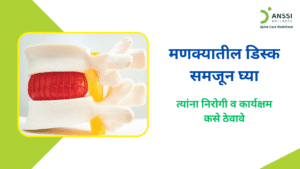Back pain is one of the most common health problems worldwide, affecting millions of people of all ages. Whether it’s caused by poor posture, disc degeneration, injury, or lifestyle habits, chronic back pain can interfere with your daily life and reduce productivity.
While surgery may seem like a quick fix, it’s often not the only option. In fact, many patients can find lasting relief through non-surgical, conservative treatments that are safe, effective and do not involve invasive procedures.
Why Avoid Back Surgery?
Spinal surgery is a serious procedure that involves risks such as infection, nerve damage, and prolonged recovery. In some cases, patients may not experience full relief, or the pain might return later.
Moreover, surgery often requires weeks or even months of downtime, making it unsuitable for people who need to stay active or continue working.
Research and clinical evidence increasingly show that most types of back pain, especially those caused by herniated discs, spinal stenosis, or muscular strain, can be successfully treated without going under the knife.
Non-Surgical Spinal Decompression Treatment: A Proven Alternative
One of the most advanced non-surgical treatments for back pain is non-surgical spinal decompression treatment. This US-based procedure involves using a specialised table to gently stretch the spine. The process relieves pressure on compressed spinal nerves, rehydrates spinal discs, and promotes the natural healing of damaged tissues.
Spinal decompression is especially effective for conditions such as:
- Herniated or bulging discs
- Sciatica
- Degenerative disc disease
- Facet joint syndrome
- Spinal stenosis
Patients typically undergo a series of 18-25 sessions of spinal decompression over several weeks, with most reporting significant pain reduction and improved mobility after a few sessions; without any need for medication, injections, or surgery.
Physiotherapy and Exercise Therapy
Physiotherapy is a crucial component of non-surgical back pain management. A personalised exercise plan designed by a physiotherapist can help:
- Strengthen the core and back muscles
- Improve flexibility and posture
- Restore spinal alignment
- Reduce pressure on affected discs or joints
Common therapeutic exercises include stretching, core strengthening, resistance training, and posture retraining. Physiotherapy not only treats the symptoms but also addresses the root causes of back pain, preventing future recurrences.
Patients are also educated on how to perform daily movements safely and avoid injury. Over time, physiotherapy builds resilience in the spine and helps individuals return to their normal routine pain-free.
Lifestyle Modifications for Long-Term Relief
Many back pain issues stem from poor lifestyle habits such as sitting too long, lifting improperly, or not exercising enough. Making small but consistent changes in daily routines can significantly reduce or even eliminate back pain.
Here are a few essential lifestyle modifications that support spinal health:
- Posture correction: Sit upright with your feet flat and your back supported. Avoid slouching.
- Ergonomic adjustments: Use supportive chairs, adjustable desks, and lumbar cushions.
- Movement breaks: Try not to sit or stand in one position for too long. Stretch every 30-60 minutes.
- Proper lifting techniques: Always bend your knees, not your back, when picking up heavy objects.
- Stress management: Mental stress leads to physical tension, which can worsen back pain. Relaxation techniques like yoga and breathing exercises can help.
By adopting healthy habits, you create a supportive environment for your spine and reduce reliance on medication or surgical interventions.
The Holistic Advantage of Non-Surgical Care
Non-surgical treatments not only relieve pain but also offer a holistic, whole-body approach to healing. Instead of masking symptoms, these therapies focus on improving overall spinal function, mobility, and muscle balance. When combined, spinal decompression, physiotherapy, posture training, and ergonomic support, together work synergistically to promote long-term wellness.
Moreover, these treatments are personalised. Doctors and physiotherapists develop care plans tailored to each patient’s pain level, lifestyle, and recovery goals. This ensures lower recurrence rates and a faster return to daily activities compared to the unpredictable outcomes of surgery.
When Should You Consider Non-Surgical Treatments?
If you experience symptoms like:
- Chronic or intermittent back pain
- Pain radiating to the legs or buttocks
- Stiffness and reduced mobility
- Discomfort from prolonged sitting or standing
…it may be time to consult a spine specialist. Early intervention is key. Delaying care can lead to worsening symptoms or more complex conditions. With modern diagnostic tools and targeted treatments like spinal decompression, many people can now manage their back pain safely, without any need for surgery.
About ANSSI:
ANSSI Wellness focuses on improving the quality of life for patients suffering from spinal issues, aiming to provide relief where other conventional treatments have failed. Through advanced non-surgical spinal decompression treatment, ANSSI is committed to helping patients avoid surgery and recover in a safe, effective, and compassionate environment.
Connect with ANSSI Wellness on LinkedIn, Instagram, and Facebook for expert guidance.



